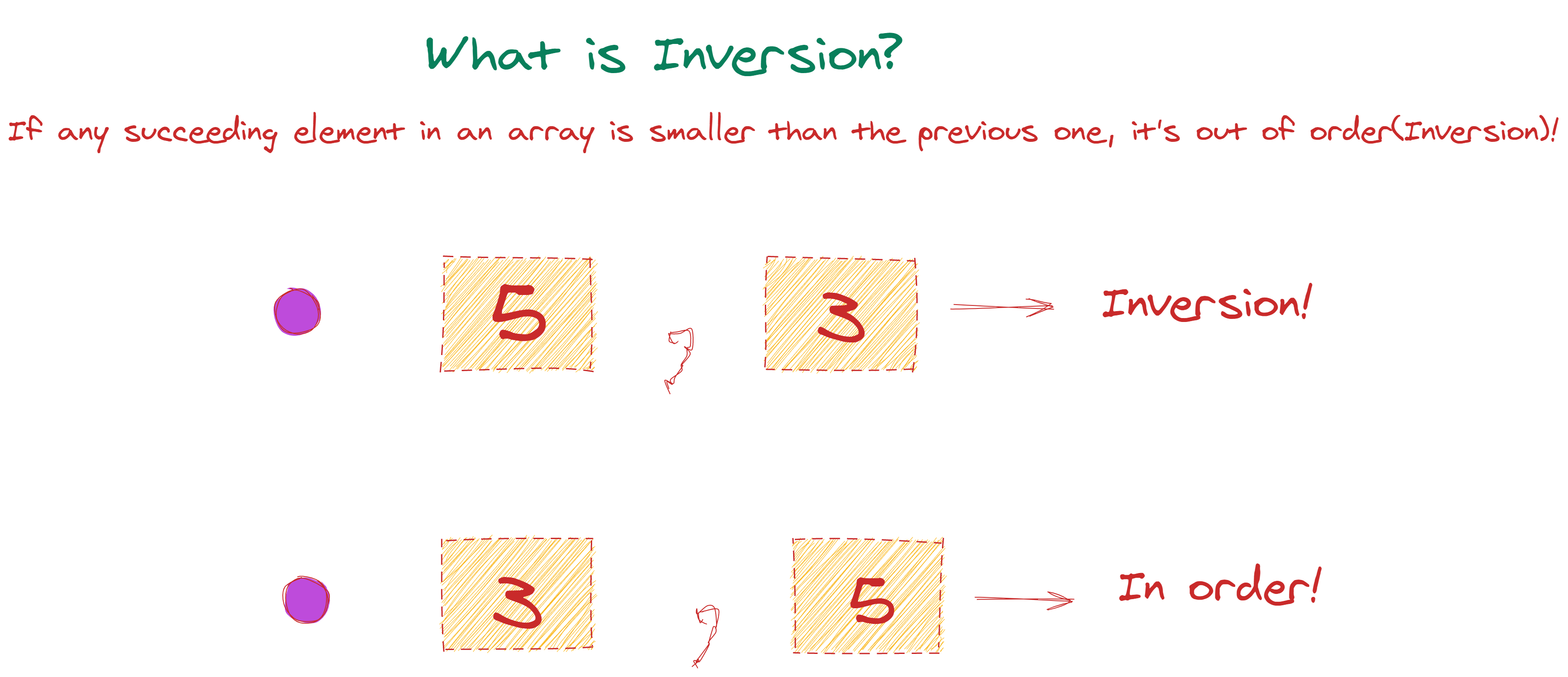Good morning! Here's our prompt for today.
This was submitted by user Hackleman.
Determine how "out of order" a list is by writing a function that returns the number of inversions in that list.
Two elements of a list L, L[i] and L[j], form an inversion if L[i] < L[j] but i > j.

For example, the list [5, 4, 3, 2, 1] has 10 inversions since every element is out of order. They are the following: (5, 4), (5,3), (5,2), (5,1), (4,3), (4,2), (4,1), (3,2), (3,1), (2,1).
The list [2, 1, 4, 3, 5] has two inversions: (2, 1) and (4, 3).
Do this in better than O(N^2).
Constraints
- Length of the given array <=
100000 - Values in the array ranges from
-1000000000to1000000000 - Expected time complexity :
O(nlogn) - Expected space complexity :
O(1)
Try to solve this here or in Interactive Mode.
How do I practice this challenge?
xxxxxxxxxx26
def inversions(l): # fill in return limport unittestclass Test(unittest.TestCase): def test_1(self): assert inversions([5, 4, 3, 2, 1]) == 10 print("PASSED: inversions for [5, 4, 3, 2, 1] should be 10") def test_2(self): assert inversions([2, 4, 1, 3, 5]) == 3 print("PASSED: inversions for [2, 4, 1, 3, 5] should be 3") def test_3(self): assert callable(inversion) == True print("PASSED: `inversions` should be a function")if __name__ == "__main__": unittest.main(verbosity=2) print("Nice job, 3/3 tests passed!")OUTPUT
:001 > Cmd/Ctrl-Enter to run, Cmd/Ctrl-/ to comment
Here's our guided, illustrated walk-through.
How do I use this guide?
Access all course materials today
The rest of this tutorial's contents are only available for premium members. Please explore your options at the link below.


